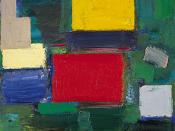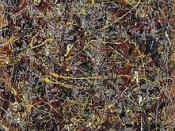At the turn toward 20th century, under the tension of World War II, "numerous artists and intellectuals fled [â¦] to settle in America". The convergence of artists such as Hans Hofmann, Josef Albers, and George Grosz⦠not only "brought European ideas to a new generation of American painters", but also created a chance for American art to develop. Hence, "the history of world art in the second half of the twentieth century bore an unmistakable American stamp" as emphasized by Lawrence S. Cunningham & John J. Reich in their Culture and Values - A Survey of the Humanities (587). Yet, in order for American art gains its "international and transnational character", it takes plenty of time for artists to explore and advance their artistic styles. Therefore, in this period before World War II, each artist, with their own talents and philosophy were free in applying, trying various schools of art.
For instance, Maurice Prendergast or Childe Hassam, were painting genteel pictures of upper-class life, following impressionistic style. However, Robert Henri, John Sloan, and George Bellows, rejected this kind of art and devoted themselves to portraying, with direct, vigorous realism, life in the city streets. They were later dubbed the Ashcan school, reflecting their choice of homely subject matter. During the 1930s, other American painters reacted against foreign influences and turned to portraying the American scene in their own ways. Regionalists such as Grant Wood were inspired by rural Midwestern life- as in his universally popular work, the satirical American Gothic. Ben Shahn gave a political edge to his portrayals of city life during the Depression, while the greatest American realist of the century, Edward Hopper, took as the subject of his quiet, contemplative paintings the solitude of individuals in modern cities and small towns.
Through most of its...


